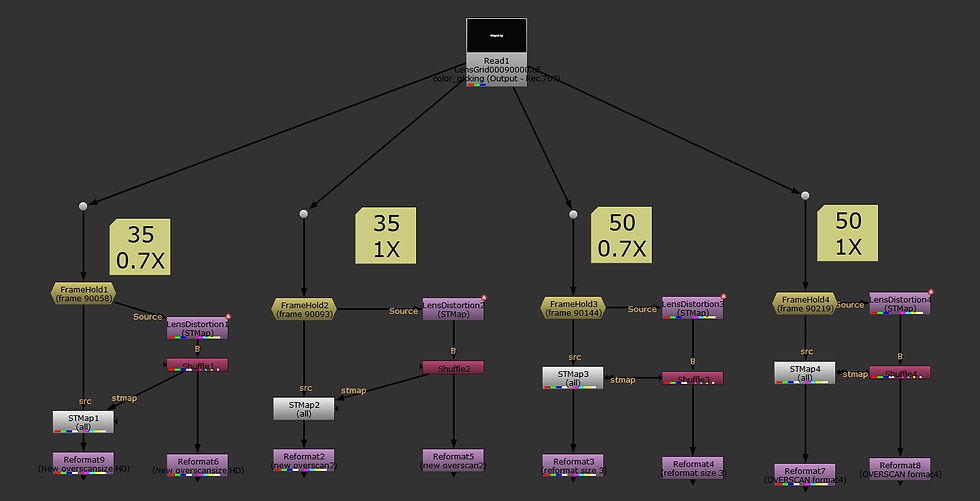Exploring lens distortion and lens grids
- squarezeroone
- Feb 4
- 2 min read
I’ve been testing a workflow to handle things independently, specifically to analyse lens distortion for a clean CG integration.
This is a standard process in VFX production, but as an independent VFX supervisor with a limited budget, it presents some challenges.
To begin, I needed a printed lens grid. Ideally, this should be mounted flat on MDF or foam board and positioned at camera height. I purchased a 150x100cm thin vinyl print online, ironed out any fold marks, and hung it in my living room, ensuring it was as straight as possible—an essential step for accurate results.

Next, I set up proper lighting to avoid shadows and began shooting the footage. Using a clapper and colour checker, I carefully recorded each lens, taking detailed notes on lens type, take numbers, and any other relevant details.

In DaVinci Resolve, I assembled a string-out of all footage, adding a few seconds of title cards listing the lens and settings used. I then brought the footage into Nuke, frame-held each lens grid, and started solving for lens distortion.
The process involves holding a frame, tracking features, manually correcting and removing bad points, and generating a solve.






This produces an STMap that can be used outside Nuke, making 3D tracking and CG integration much more straightforward.

Throughout the process, I encountered some challenges, such as not capturing enough features near the corners of the images, which affected the accuracy of the solve. For anyone looking to refine this approach, I’ve included a few references that may be useful for taking it a step further.
References links:
Full tutorial on this:
Lens grid files :
Youtube links:




Comments